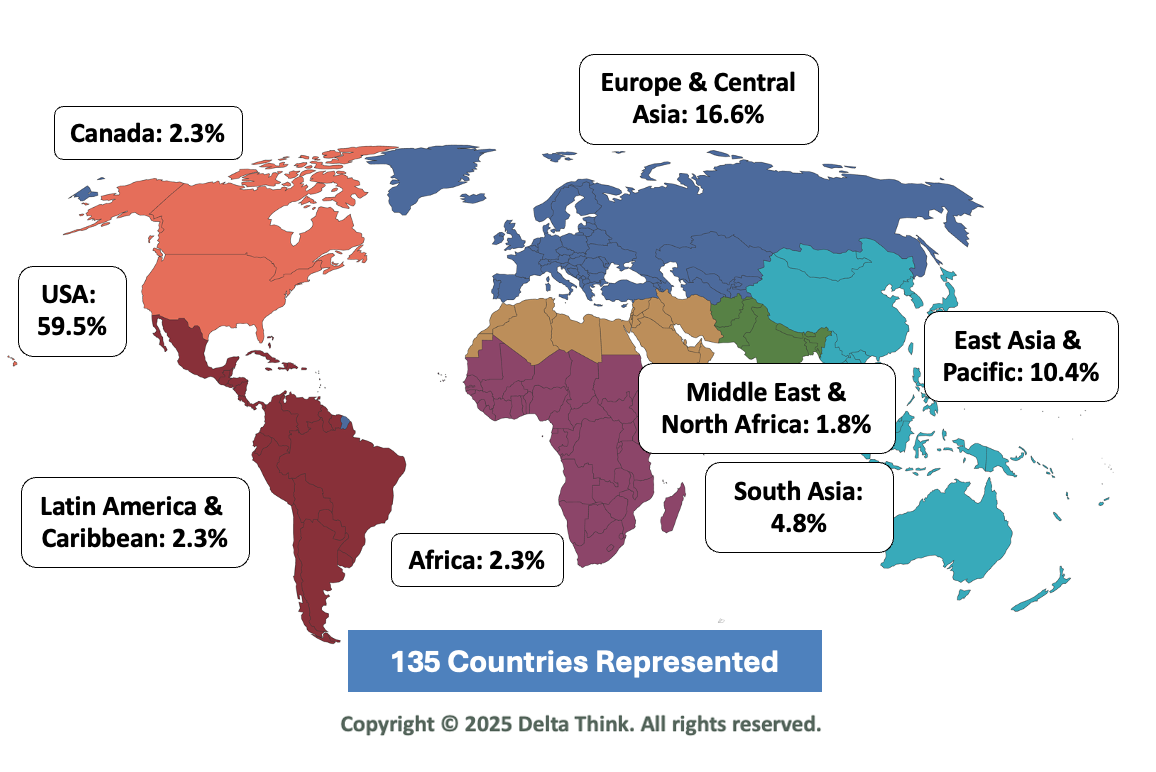News & Views: Transformative Journals

Overview
This month we look at Transformative Journals (TJs). We examine what their measures of compliance mean and how the criteria for growing OA in TJs compares with the typical growth of OA in hybrid journals.
Background
We have previously analyzed the proportions of papers that might be affected by Plan S, the European-led initiative “to make full and immediate Open Access to research publications a reality.” Researchers funded under the initiative must publish via one of four routes, which lay down rules for allowed access types. One allowed route is a Transformative Journal.
A TJ may have a subscription component, but must demonstrate increasing OA uptake of “at least 5% in absolute terms and at least 15% in relative terms, year-on-year…assessed either on a rolling 3-year historic basis or each calendar year.” It must reduce subscription payments to account for OA payments and flip to fully OA “when 75% of its research content is published Open Access.”
TJ Requirements
We contacted cOAlition S to clarify the definitions of the terms used, which are as follows:
- Absolute: the proportion of the journal’s output that is OA must increase by 5 percentage points every year. If 25% of a journal’s papers are OA this year, then 30% must be OA next year, then 35%, etc.
- Relative: the number of OA articles in the journal must increase by 15% each year. If a journal publishes 100 OA papers this year, then it must publish 115 OA papers next year, 132 the next, and so on.
cOAlition S kindly provided us with a calculator spreadsheet, which allowed us to model the numbers of OA papers needed each year to maintain a journal’s Transformative Journal status. Figure 1 shows the results.
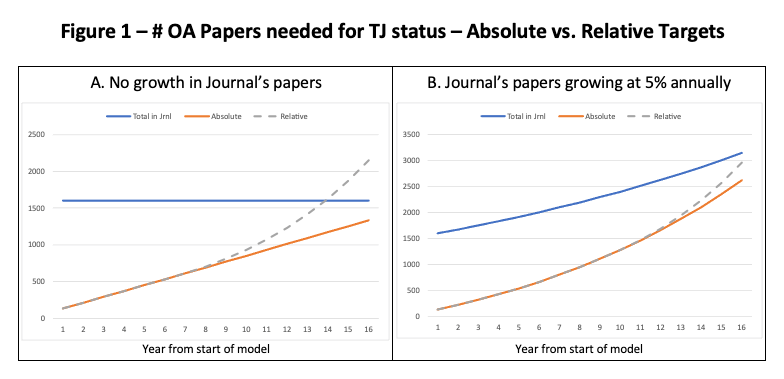
Source: cOAlition S, Delta Think Analysis. © 2021 Delta Think Inc. All rights reserved.
Using average market values from Delta Think’s Open Access Data & Analytics tool (OA DAT), we modelled two scenarios. To allow us to see the trends, we ignored the 2024 expiration date of TJ support. The rules are such that the relative targets are always based on the previous year’s output. Therefore, where the absolute target is the driver, the relative target is increased each year to match it.
- To see the dynamics at work, we start with a hybrid journal where the total number of papers published is constant from year to year at roughly 1600 papers (Figure 1A).
- Around 8% (or 128 papers) of its output is OA in year one, the absolute growth criterion drives the growth target for the number of OA papers in the early years.
- Once around 40% of output has been reached (or 640 papers), the relative criterion becomes the more challenging target.
- By year 12 the journal would have exceeded 75% OA and had to flip to OA.
- For journals growing their total output at around 5% annually, from the same 8% OA starting point, the absolute targets remain a driver for longer, and the point of flipping gets later by one year.
For journals that have higher starting points of OA uptake, you can start reading from further to the right of the charts – e.g. for 50% uptake, start counting from year 9.
How Realistic Are the Targets?
cOAlition S’s website lists 2,266 Transformative Journals from 12 publishers (as of May 2021). By cross-referencing this list with our OADAT data, we can see how the journals’ performance over the past few years compares with the TJ requirements and put them in context. Figure 2 shows the results.
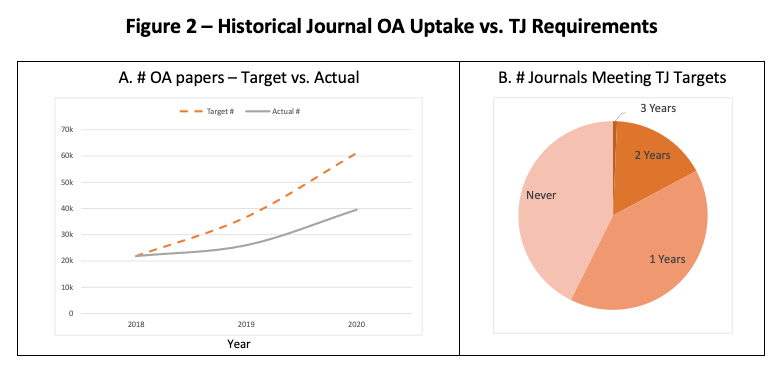
Source: cOAlition S, Crossref, Unpaywall, Delta Think Analysis. © 2021 Delta Think Inc. All rights reserved.
The data suggest that historically, the OA proportion of journals’ output has not grown as fast as TJ requirements require:
- Over the last three years, the total number of papers published across all journals currently marked as TJs is growing at roughly half the rate needed for them to continue to enjoy TJ status.
- The number of journals meeting TJ requirements of OA growth is small. Only a dozen or so (out of around 2,000) have met TJ targets for each of the last three years. However, around two thirds have met TJ targets for at least one year out of the last 3.
The data also showed that only 20 or so journals (less than 1%) had over 75% OA uptake, while two thirds (68%) had 20% OA uptake or less. Smaller journals show the fastest growth in OA. Most of the larger ones appear to be virtually static.
We can also compare journals’ output over time with the TJ target model to see which combinations of the two TJs targets the journals met, as shown in Figure 3.
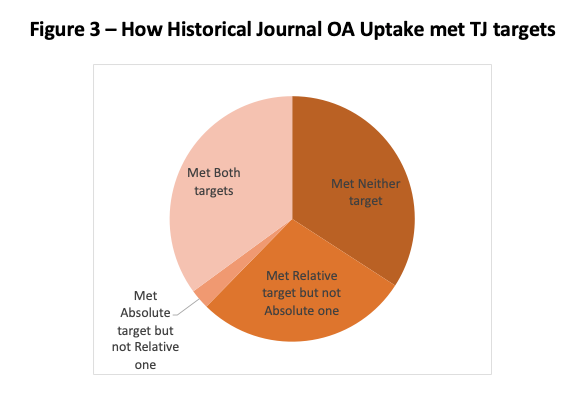
Source: cOAlition S, Crossref, Unpaywall, Delta Think Analysis. © 2021 Delta Think Inc. All rights reserved.
Reading clockwise from 12 o’clock:
- Around one third (34%) met neither target.
- A further 28% did not meet the Absolute target, but met the Relative one.
- Only around 1.5% failed to meet Relative target but met the Absolute one.
- This is consistent with our finding, above, that the Absolute criterion is the tougher of the two criteria to meet for journals starting with lower OA uptake.
Our analysis has some caveats.
- The lack of ISSNs in cOAlition S’s TJs list made matching journals ambiguous, although we got around 95% of them.
- Given the commitment needed to implement TJs, it’s likely that publishers will intervene to promote OA uptake. Therefore, historical performance is not necessarily a guide to future performance.
- Three-year rolling averages can be used in the annual assessment of TJ status. The average might help a journal retain its status if earlier years (2021, 2022) lift its averages for later ones (2023, 2024). But the arithmetic suggests that rolling averages won’t help if a journal is fundamentally struggling to meet its OA targets.
Conclusion
The data suggest that the OA growth criteria for TJ status are aggressive, but not impossible. The current crop of TJs are on average growing OA proportions at around half the pace needed to be in compliance. (The average growth in OA uptake of hybrid journals from major publishers follows broadly similar patterns.) Many journals have previously met TJ targets for one year or even two, suggesting the challenges lie in adding to existing momentum, rather than building OA uptake from scratch.
However, the biggest caveat is timing. Support for TJs is due to be withdrawn completely in 2024, but two thirds of current TJs have less than 20% OA uptake. So many could meet their TJ targets, but still have only around one third OA uptake in 2024. Publishers would then be faced with a tough choice: flip minority-OA journals to fully OA, risk at least one third of output as zero-embargo Green impacting subscriptions … or fall out of Plan S compliance completely and lose one third of their submissions.
This article is © 2021 Delta Think, Inc. It is published under a Creative Commons Attribution-NonCommercial 4.0 International License. Please do get in touch if you want to use it in other contexts – we’re usually pretty accommodating.

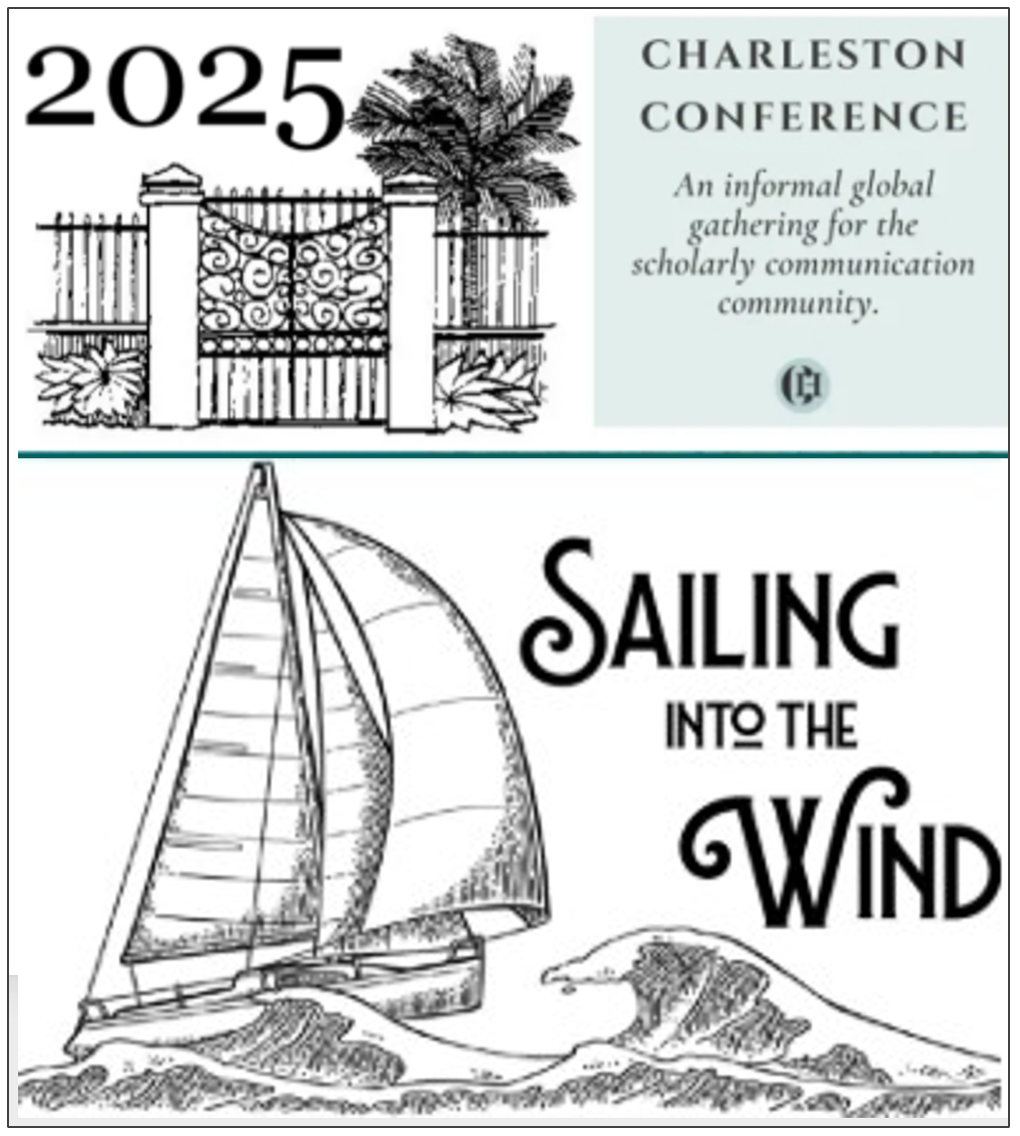





News & Views: Will cuts to National Science Foundation funding affect scholarly publishing activity?
